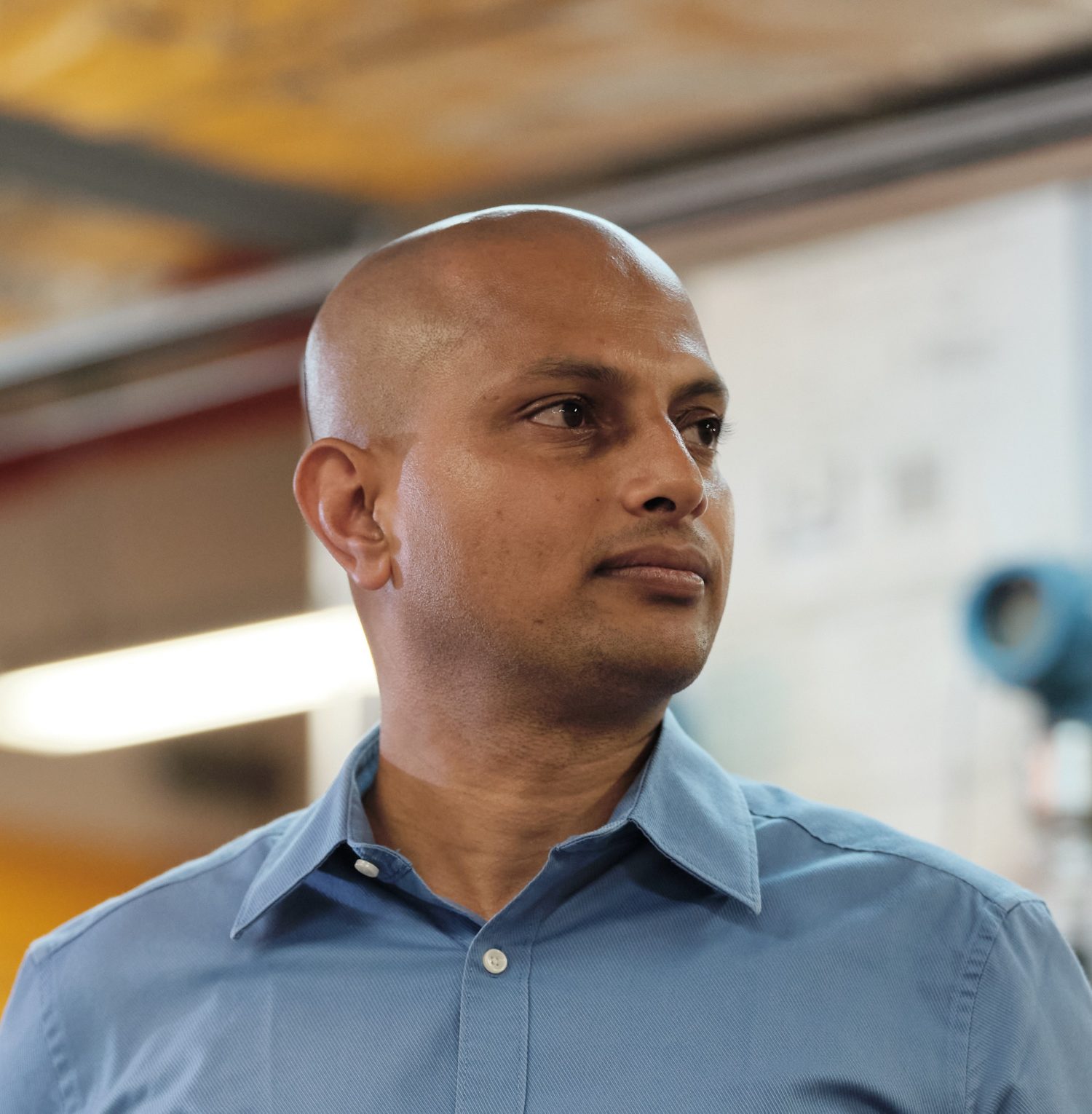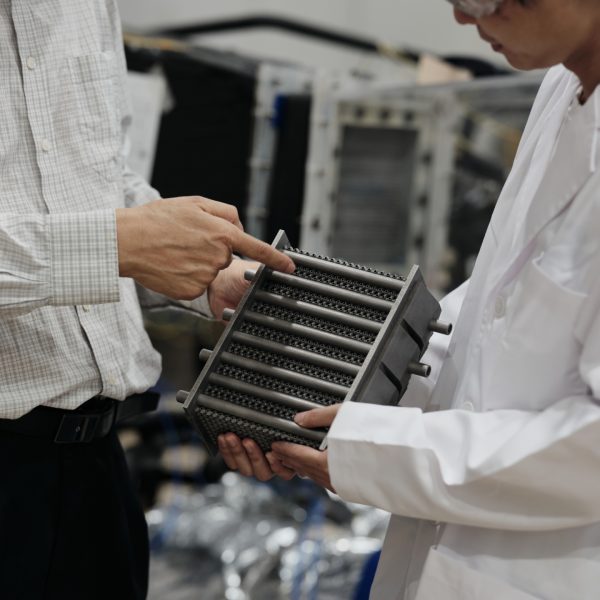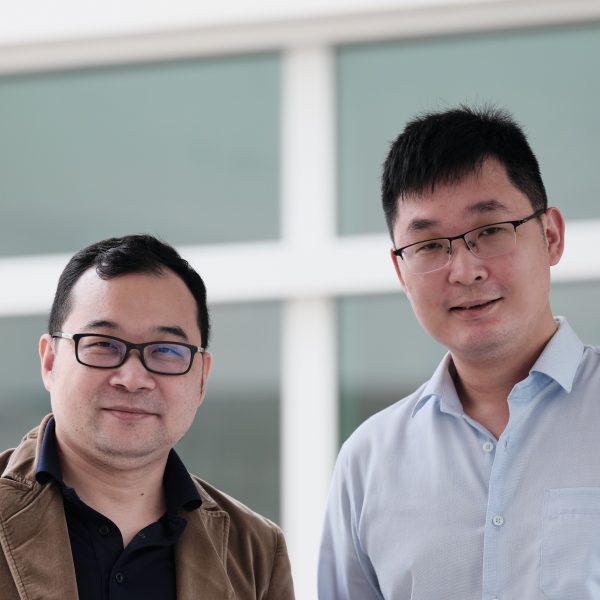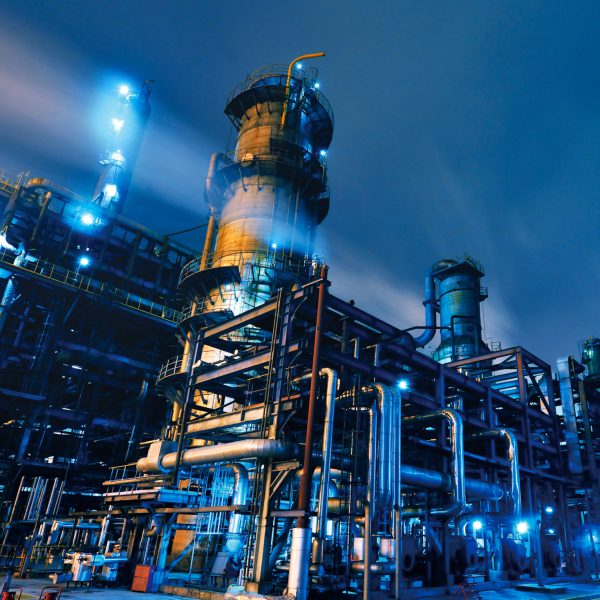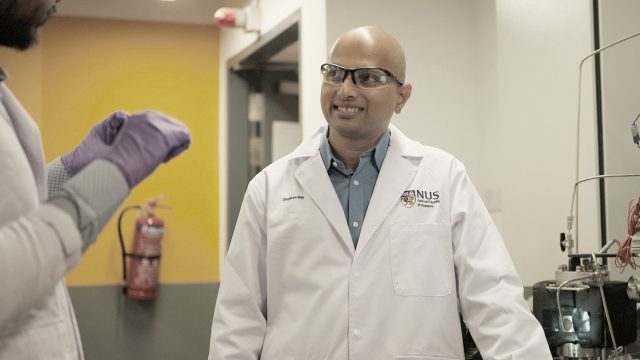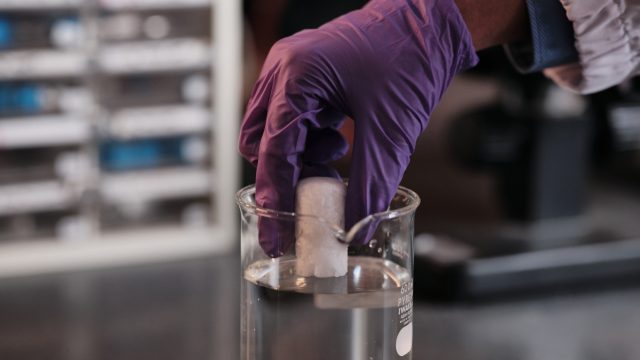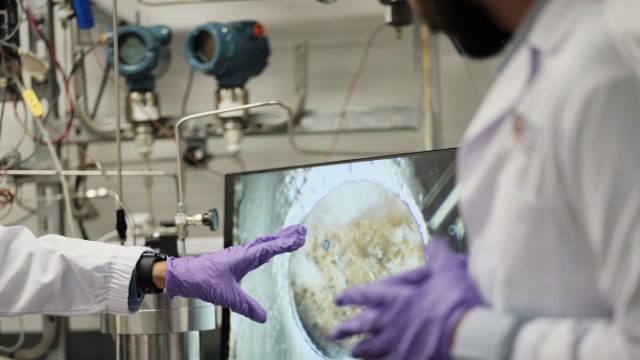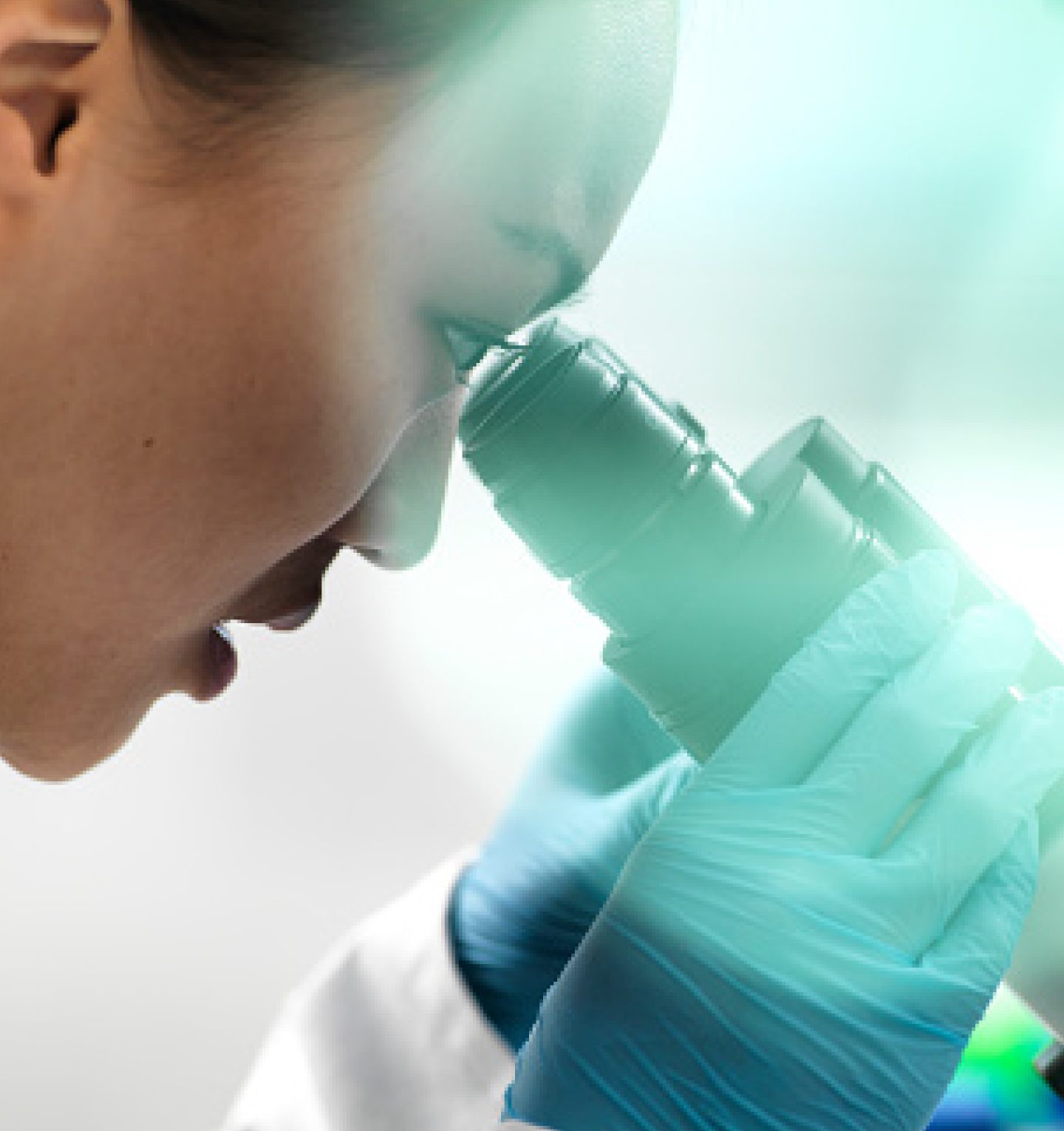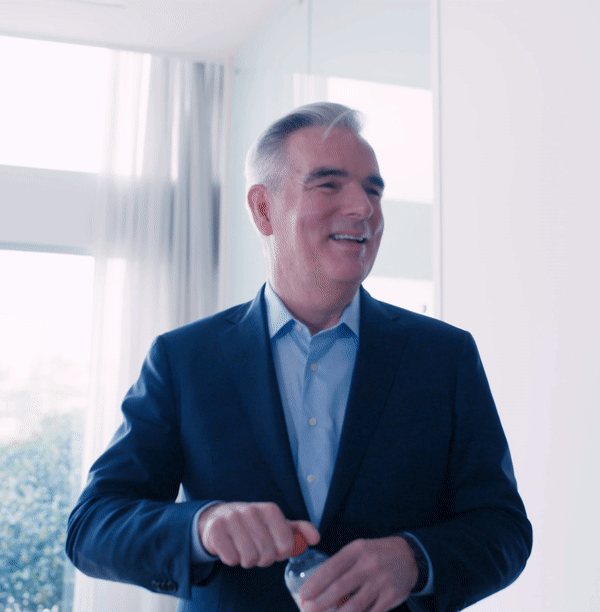Scientists in Singapore have turned to nature to develop new technology that can help society achieve its net-zero emissions ambition.
Praveen Linga and his team at the National University of Singapore are recreating a natural process to turn captured carbon into solids that can be permanently stored under the sea bed. The process could speed up a transformation that would take thousands of years in the wild – to just a few months in the lab.
The solids, called clathrate hydrate, are formed from water and gases placed under immense pressure and heat. Once solidified it looks like shards of glass or ice.
“What we’re figuring out how to do in the lab is replicate this organic solution found in nature, which can let us safely and permanently store captured carbon,” Praveen says. “The process of turning this captured carbon into a hydrate also opens up the potential for more storage sites globally, allowing for significantly greater levels of captured CO2 to be stored underground and under the sea with no chance for escape.”
Praveen says if this process is done at scale, heavy industry across Asia Pacific could be one step closer to decarbonizing their operations at lower costs. The cost could be as much as three to four times less than current technology, opening the door to its use for rising nations.
Click below to find out more about Praveen’s research and the role of the Singapore Energy Centre and ExxonMobil in supporting a lower-emissions future.
